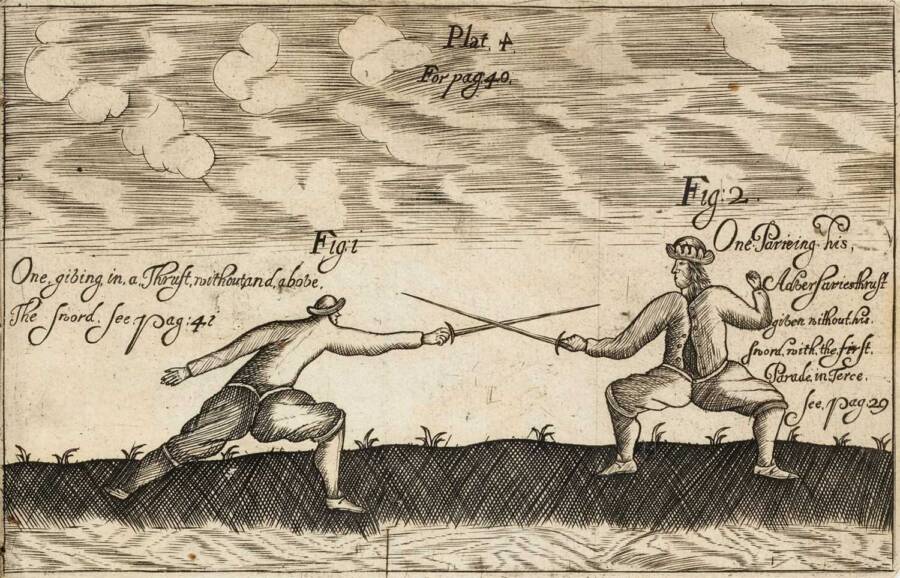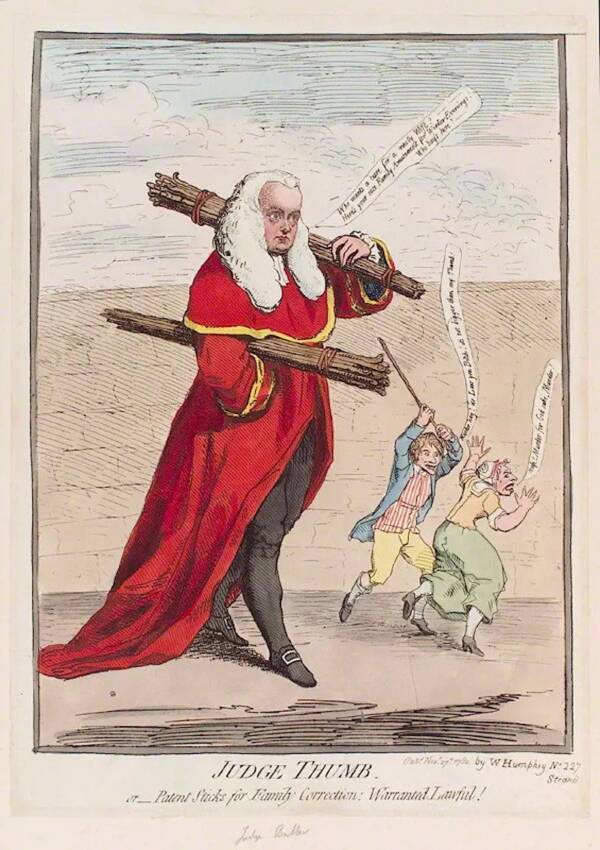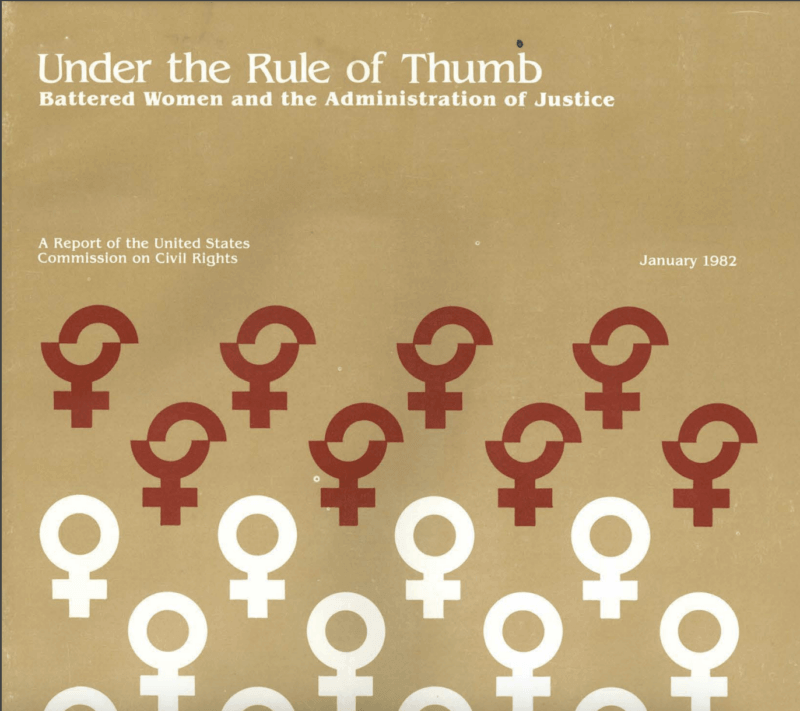The expression "rule of thumb" has innocuous origins — but many believe that it derives from 18th-century laws about husbands being allowed to beat their wives.
We all have a few general rules that govern certain aspects of our lives. For some people, it’s a good rule of thumb to keep a certain amount of money in the bank, to go for a long walk after a big meal, or wake up early on an especially busy day. But where does that expression, “rule of thumb,” actually come from?
Though some have drawn a connection between the expression and domestic violence, the origins of “rule of thumb” are a bit murkier. The phrase has been in use for hundreds of years, and has long signified a kind of informal, everyday rule based on observation or conventional wisdom.
From its seemingly innocuous beginnings to its surprisingly violent turn, here’s everything you need to know about the origins and history of “rule of thumb.”
The Murky Origins Of “Rule Of Thumb”
The expression’s exact origins are unknown, but its earliest known use was documented in the 17th century.
According to Origins of the Specious: Myths and Misconceptions of the English Language, the phrase first appeared among the collected sermons of a Scottish preacher named James Durham. He preached in the mid-1600s that: “Many profest Christians are like to foolish builders, who build by guess, and by rule of thumb (as we use to speak), and not by Square and Rule.”
The New York Times additionally reports that the phrase was also found sprinkled throughout other 17th century and 18th century documents. In 1692, Sir William Hope wrote in his The Compleat Fencing Master that “What he doth, he doth by rule of Thumb, and not by Art.'” And Kelly’s Scottish Proverbs decreed in 1721 that “No Rule so good as Rule of Thumb.”

Public DomainOne of the first documented uses of the phrase “rule of thumb” appeared in Sir William Hope’s The Compleat Fencing Master in 1691 when Hope wrote: “What he doth, he doth by rule of Thumb, and not by Art.'”
The phrase itself is likely much older and probably emerged from a practical need. Origins of the Specious notes that people have long used body parts to measure things (a foot to measure distance, for example, or hands to measure the height of a horse). Thumbs were no different, and a “thumb’s breadth” was used to measure textiles.
“As for the ‘rule’ in ‘rule of thumb,'” Origins of the Specious explains, “think of a ruler or a measuring stick.”
Despite these innocuous origins, the expression “rule of thumb” has become associated with domestic abuse in recent years. How did that happen?
Judge Francis Buller’s Ruling On Rods
In 1982, the U.S. Commission on Civil Rights produced a report on domestic abuse of women entitled: “Under the Rule of Thumb: Battered Women and the Administration of Justice.” By then, the innocent unit of measurement had become something more sinister. And it all has to do with an 18th-century English judge named Francis Buller.
Two hundred years before the “Under the Rule of Thumb” report, Buller allegedly ruled in favor of husbands beating their wives — but only if their rod or stick was no larger than their thumb. There is no evidence that Buller actually said anything of the sort, but he was mocked in the press.

National Portrait GalleryA 1782 cartoon mocking Francis Buller, an English judge who allegedly said that men could beat their wives as long as their rod or stick was no bigger than the width of his thumb.
As The New York Times reports, political caricaturist James Gillray derided Buller in a 1782 cartoon that showed a judge holding an armful of sticks with the caption: “Who wants a cure for a nasty wife? Here’s a nice Family Amusement for Winter Evenings.” In the background, a woman shouts: “Murder!” and a man shouts back: “Murder, hey? It’s Law you B—-! It’s not bigger than my Thumb!”
Thanks to Gillray, Buller was forever associated with this odd rule. But the expression also took on a new life of its own. Despite the lack of evidence that Buller had actually made his infamous ruling, at least three 19th-century American judges cited it, according to Origins of the Specious.
That said, neither Buller or Gillray explicitly used the expression “rule of thumb” in reference to domestic violence. As far as etymologists can tell, that didn’t come until about 200 years later.
How The Meaning Of “Rule Of Thumb” Become Associated With Domestic Violence

U.S. Commission on Civil RightsThe U.S. Commission on Civil Rights strengthened the link between the phrase “rule of thumb” and domestic violence when they used the expression in a 1982 report on battered women.
Though it’s unclear exactly how “rule of thumb” became linked with domestic violence, Origins of the Specious suggests that it happened in 1976, when a feminist named Del Martin used it as a pun while writing a report on violence against women.
“For instance,” Martin wrote, “the common-law doctrine had been modified to allow the husband ‘the right to whip his wife provided that he use a switch no bigger than his thumb’ — a rule of thumb, so to speak.”
In the years that followed, the phrase became linked with domestic violence. The association between the two is so strong that some have been called out as misogynists for using the expression “rule of thumb.”
But the truth is that the origins of rule of thumb have nothing to do with domestic violence. Rather, the phrase emerged as a unit of measurement akin to “feet” or “hands.” It was only later that a judge’s ruling — which he may not have made at all — brought “thumbs” into the sphere of domestic violence. And it was centuries after that that the phrase became strongly, and unfairly, associated with the abuse of women.
As always, it’s a good rule of thumb to do your research when it comes to learning about the origins of common phrases.
After reading about the origin of the expression “rule of thumb,” discover the origin of another common phrase, “crossing the Rubicon.” Or, learn about the surprising history of “Let them eat cake,” a declaration often (but erroneously) attributed to French Queen Marie Antoinette.






